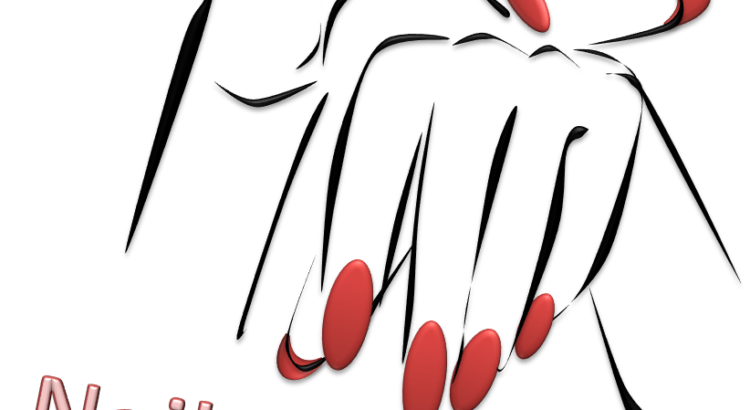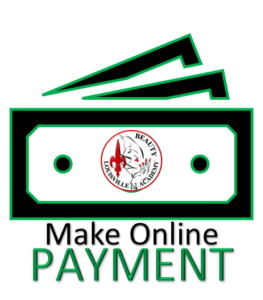The Nail Industry: A Look into the Past, Present, and Future
The nail salon has become a common feature in American towns, cities, neighborhoods, and shopping malls throughout the United States. The nail industry has grown substantially in the USA in the last two decades, with the major factor of growth being Vietnamese immigrants who transformed the beauty industry and implemented the market for affordable pedicures, manicures, and artificial nails.
According to research, there are more than 2000 businesses licensed to do manicures and pedicures in New York City alone. The US Bureau of Labor Statistics estimated there were around 86,900 manicurists and pedicurists in the US in 2012, with a projected growth to around 100,400 by 2022. However, this count is believed to be low in comparison to the current number as of 2015. In California, there are currently more than 97,000 manicurists, with 80% of these technicians being Vietnamese immigrants.
The popularity and prevalence of the nail industry today has led to a lack of understanding about its origins and history. But where did it all begin? The nail industry can be traced back to ancient civilizations, where nail care was seen as a symbol of wealth and status. In ancient Egypt, for example, the rich and powerful would have their nails painted with henna, while in China, nail care was seen as a symbol of femininity and elegance.
Over time, the industry has evolved and adapted to changing trends and technologies. In the early 20th century, for example, the invention of the electric nail file revolutionized the industry, making it possible to shape and polish nails with greater precision and speed. The invention of acrylic nails in the 1950s also had a significant impact on the industry, as it allowed for the creation of longer and more durable nails.
In the last few decades, the nail business ownership and workforce have tripled in size; and dramatically to accounts and includes large numbers of immigrated workers. The estimated Vietnamese licensed nail technicians increase 10 times between 1987 and 2002 (Federman, Harrington, and Kryns
References
Alaves, V. M., Sleeth, D. K., Thiese, M. S., & Larson, R. R. (2013). Characterization of indoor air contaminants in a randomly selected set of commercial nail salons in Salt Lake County, Utah, USA. International Journal of Environmental Health Research, 23(5), 419–433. http://doi.org/10.1080/09603123.2012.755152
Agusthiyar R., & Narashiman, K. (2015). An ETL Based Framework For Data Cleaning In Multi Data Source. International Journal of Applied Engineering Research, 10(4), 1005–10014.
American Salon. (2005). Green Book. Cleveland, Ohio: Advanstar Communications
Brettell, C. B., & K. E. Alstatt (2007). The Agency of Immigrant Entrepreneurs: Biographies of the Self-Employed in Ethnic and Occupational Niches of the Urban Labor Market. Journal of Anthropological Research 63:383–397
California Healthy Nails Salon Collaborative. (2015). About Healthy Nail Salons | California Healthy Nail Salon Collaborative. Retrieved from http://www.cahealthynailsalons.org/what-is-hns/about-healthy-nail-salons/
California State Board of Barbering, Cosmetology (BBC). (2006). Application for examination. Sacramento, CA, USA: California State Board of Barbering and Cosmetology.
Eckstein, S., & Nguyen, T.-N. (2011). The Making and Transnationalization of an Ethnic Niche: Vietnamese Manicurists. International Migration Review, 45(3), 639–674. http://doi.org/10.1111/j.1747-7379.2011.00861.x
Elizabeth Arden, Inc. (2015). ABOUT ELIZABETH ARDEN. Retrieved September 7, 2015, from https://corporate.elizabetharden.com/about-elizabeth-arden/
Federman, M. N., Harrington, D. E. and Krynski, K. J. (2006). “Vietnamese manicurists: Are immigrants displacing natives or finding new nails to polish?” Industrial and Labor Relations. Review, vol. 59, no. 2, pp. 302–318.
Gilels, D., Gorman, A., Huang, P., Liou, J., Mendiratta, A., & Philip, D. (2008). The U.S. Nail Salon Industry. Women & Environments International Magazine, (76/77), 18–21.
Greenhouse, S. (2007, August 19). At Nail Salons, Beauty Treatments Can Have a Distinctly Unglamorous Side. The New York Times. Retrieved from http://www.nytimes.com/2007/08/19/nyregion/19nails.html
Hondagneu-Sotelo, P. (2001) Dome´stica: Immigrant Workers Cleaning and Caring in the Shadows of Affluence. Berkeley: University California Press.
Lacey, A. & Wright, B. (2009) Employment Outlook: 2008-18, MONTHLY LAB. REV., 82, 111.
Ly, M., & Tufts University. (2003). Assessing and communicating occupational health risks to Vietnamese nail salon workers (honors thesis). Medford, MA, USA: Tufts University.
Madnani, N. A., & Khan, K. J. (2012). Nail cosmetics. Indian Journal of Dermatology, Venereology & Leprology, 78(3), 309–317. http://doi.org/10.4103/0378-6323.95445
Min, P. G. (2006). ‘‘Korean Americans.’’ In Asian Americans: Contemporary Trends and Issues. Ed.P. Gap Min. Thousand Oaks, CA: Pine Forge Press. Pp. 230–259.
NAILS. (2010). Industry Statistics. Nails Magazine 2010 Big Book. Torrance, CA: Available from: http://files.nailsmag.com/Market-Research/bb2010–11stats-reprints.pdf
NAILS (2013). Nails magazine 2012-2013. The Big Book. Retrieved from http://files.nailsmag.com/Market-Research/NAILSbb12-13stats.pdf
Nisbet, R., Elder, J., & Miner, G. (2009). Handbook of Statistical Analysis and Data Mining Applications (1 edition). Amsterdam ; Boston: Academic Press.
Roelofs, C., & Do, T. (2012). Exposure Assessment in Nail Salons: An Indoor Air Approach. ISRN Public Health, 1–7. http://doi.org/10.5402/2012/962014
Salon City Inc. (2009). Salon City Reports on Professional Beauty Federation’s Capitol Hill Event. Retrieved September 7, 2015, from http://www.marketwired.com/press-release/salon-city-reports-on-professional-beauty-federations-capitol-hill-event-1200838.htm
The New York Time (NYT). (1910, January 6). TAKE YOUR BUNIONS TO THE FREE CLINIC; New Corporation Will Undertake Also to Kill Your Corns Without Charge. The New York Times. Retrieved from http://query.nytimes.com/gst/abstract.html?res=990CE7D91730E233A25755C0A9679C946196D6CF
Thu Quach, Kim-Dung Nguyen, Doan-Billings, P.-A., Okahara, L., Fan, C., & Reynolds, P. (2008). A Preliminary Survey of Vietnamese Nail Salon Workers in Alameda County, California. Journal of Community Health, 33(5), 336–343. http://doi.org/10.1007/s10900-008-9107-7
U.S. Department of Labor (2015). Occupational Outlook Handbook: : U.S. Bureau of Labor Statistics. Occupational Outlook Handbook, 2014-15 Edition. Retrieved September 7, 2015, from http://www.bls.gov/ooh/personal-care-and-service/manicurists-and-pedicurists.htm
US Patents. (1915, April 13). Finger-nail shield. Retrieved from http://www.google.com/patents/US1135382
Wahowiak, L. (2015). Health advocates helping US salons nail occupational safety. (Cover story). Nation’s Health, 45(3), 1–10.
Waldinger, R. (1994). The Making of an Immigrant Niche. International Migration Review 28(1):3–30.
Walsh, S. A. (2012). Beyond the Polish: An Examination of Hazardous Conditions in Nail Salons and Potential Solutions for the Industry in New York City. Journal of Law & Policy, 21(1), 243–282.
Woodbury, W. A. (1910). Beauty culture: A practical handbook on the care of the person, designed for both professional and private use. G.W. Dillingham.
Woodbury, W. A. (1915). The Care of the Hand: A Practical Text-Book on Manicuring and the Care of the Hand, for Professional and Private Use. Forgotten Books.





